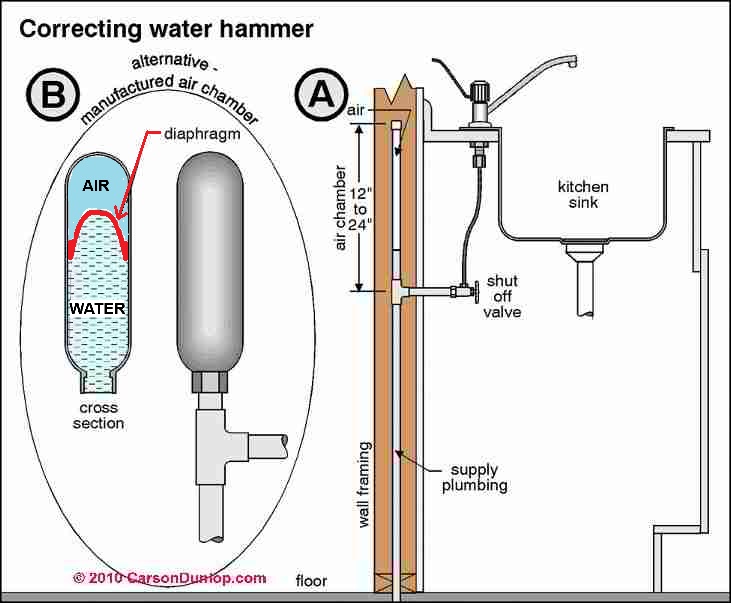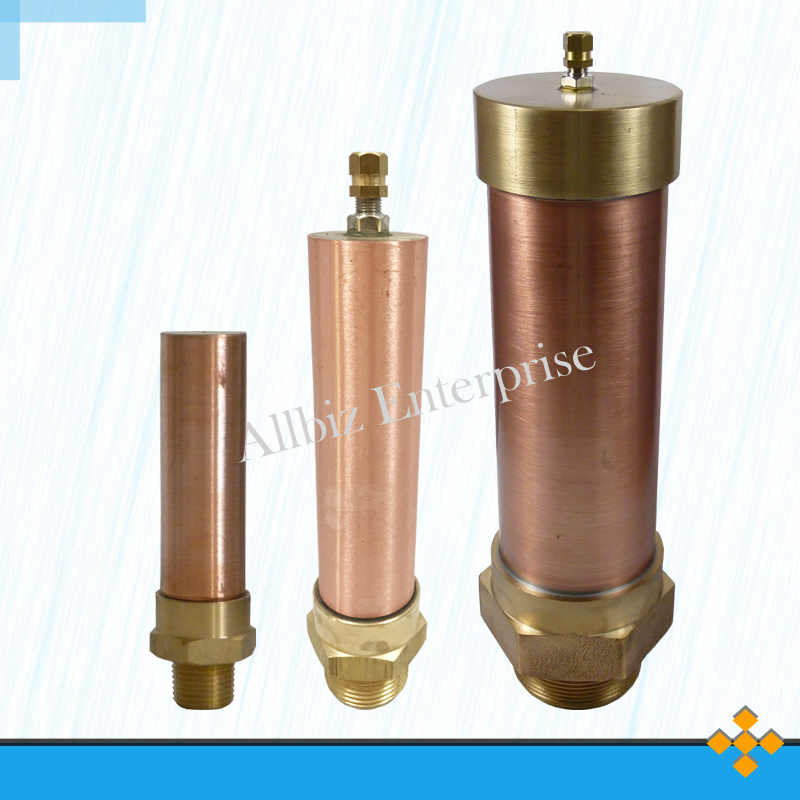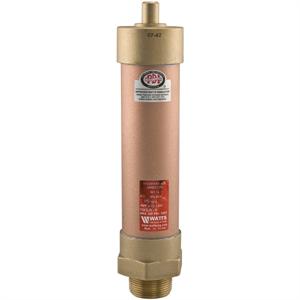

This problem is known as water hammer, a phenomenon related to the hydraulic shock waves, which can cause a vibration of plumbing pipes when they strike against each other or wooden beams. Water hammer in your home is hardly the end of the world, but it’s not something to take lightly either.It is not uncommon for water heating and plumbing systems to generate loud noise such as banging and thumping, especially when water stops or changes directions suddenly. The piston compresses the air in the cushion chamber to absorb any excess pressure. When a valve closes quickly and water flow is suddenly stopped, the back pressure pushes the piston. Arresters use a compressible air cushion and piston to absorb the pressure spikes that cause water hammer. If the problem is not at the regulator, then you’ll need to have a full-sized water hammer arrester installed. Internal parts can get gummed up or corroded and a malfunctioning regulator is potentially dangerous, especially if you’re on city water. If your home is experiencing especially high water pressure there could be an issue with the pressure regulator where the water enters your home.
#Water hammer professional#
Your best bet is to bite the bullet and hire a professional plumber. Generally they come pre-packaged with everything you’ll need to hook it up to a standard washing machine, so you may need a few adapters if installing on a dishwasher. Arresters can be found at just about any plumbing supply store. Our final DIY fix is to try installing an AA-size water hammer arrester directly at the cold water outlet. This technique won’t be effective for serious pressure spikes, but it’s a simple way to lower pressure immediately before the shut-off valve. So a half-closed valve might stop water hammer while at the same time preventing enough of the wet stuff through to get your clothes and dishes clean! You’ll lose the banging, but get dirty undies, and that’s no good.Īnother low-cost troubleshooting tip that sometimes does the trick is to replace your intake connections with wider hoses. There’s no danger in allowing less water through intake hoses, except that many appliances run off a timed fill meter and don’t actually measure how much water is entering the machine. Slower water means lower pressure and with less pressure a shut-off valve is less likely to cause water hammer. A half-closed valve won’t allow as much water through, thereby slowing the velocity of the water. Try closing intake valves to the dishwasher and washing machine half way. The lowest cost solution is not really the best, but we’ll throw it in here and let you decide whether or not to give it a go. Some techniques you can handle on your own and others require that you bring in a pro.

Solutions for water hammer vary depending on the severity of pressure spikes. Open faucets and valves to ensure even distribution of water and the elimination of air pockets. High pressure and quickly closing valves are a recipe for water hammer.įor air in the lines, drain your pipes completely and refill the system. Heavy water flow brings about an increase in pressure. Shut-off valves for these appliances close very quickly and they consume a greater than normal quantity of water. The most common valves that cause water hammer are attached to the supply lines for dishwashers and washing machines. If the banging starts when a valve closes then you’ve got water hammer. If the knocking or echoing begins when you open a valve or faucet then most likely you’ve got air in the lines. Telling the difference is generally pretty simple. Its common thatwater hammer is misdiagnosed when air pockets are the true culprit behind clanging pipes. Get it taken care of, pronto.īefore we dive into fixing water hammer, let’s make sure that this is in fact your problem. Literally.ĭon’t brush off water hammer as one of your home’s quirky personality traits. What a lot of homeowners don’t realise is that banging or thumping water lines in your walls is a potentially serious issue, not just a simple annoyance.Īt the very least excessive water pressure will eventually lead to leaks, but double up pressure spikes with a water heater featuring a failed pressure relief valve and you’ve got an explosive situation on your hands.

Water hammer is a fairly common occurrence in residential properties.


 0 kommentar(er)
0 kommentar(er)
